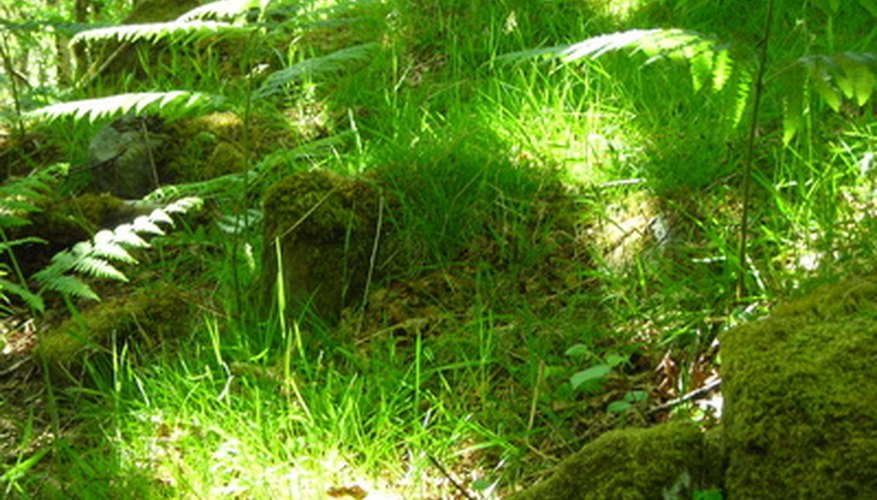Vascular plants contain vascular tissue that transports water, minerals and energy throughout the plant. An imperfect analogy can be drawn to the circulatory system in animals. Most vascular plants use seeds or flowers to reproduce, but seedless vascular plants are an interesting relic from a time when plants did not have seeds, and many species still exist today.
Evolution
Vascular plants evolved in the Silurian and Devonian periods approximately 400 million years ago. Seeds were a later evolutionary adaptation because vascular plants are the only plants that have them. Seedless vascular plants actually resemble non-vascular plants in that they use spores to reproduce, so it is likely that seedless vascular plants are a relic of that period between the transition of non-vascular to vascular.
Ancient Plants
The Psilophyta is an ancient group of seedless vascular plants that, unlike modern permutations, had almost no roots or leaves (leaves later evolved from webbing between branches). During this time, plants evolved their modern life cycle in which they alternate between gametophyte and sporophyte stages. These stages are a constant cycle that produce sex cells to fertilise new plants. The Psilophyta classification has changed over the years, and some plants have been split off into other groups.
- The Psilophyta is an ancient group of seedless vascular plants that, unlike modern permutations, had almost no roots or leaves (leaves later evolved from webbing between branches).
- During this time, plants evolved their modern life cycle in which they alternate between gametophyte and sporophyte stages.
Quillworts and Mosses
Lycophyta is a division of plants that has evolved from ancient plants. There are 1,200 species that include quillworts, club mosses and fir mosses (many kinds of mosses, however, are not vascular). Lycophyta species have rhizomes, or a lower horizontal stem which sends out adventitious roots and a microphyll stem, or a stem with a single unbranched midrib. Spores in the Lycophyta may either be spread out over the plant or clustered in a cone-like strobilus.
- Lycophyta is a division of plants that has evolved from ancient plants.
- Lycophyta species have rhizomes, or a lower horizontal stem which sends out adventitious roots and a microphyll stem, or a stem with a single unbranched midrib.
Ferns
Pteridophyta is another division of plants that includes more than 12,000 species of ferns and horsetails. Unlike Lycophytes, these plants have true leaves. They are very similar in structure to other vascular plants, but they have a special gametophyte structure called a prothallus, which is anchored to the soil by a root-like (but not true roots) rhizoid.
Fossil Fuels
Before seeded plants became prevalent, seedless vascular plants such as Rhyniophyta and Trimerophytophyta once covered the Earth. During the Carboniferous period approximately 350 million to 300 million years ago, these tree-sized plants were so ubiquitous that their remains accumulated faster than they decomposed and produced modern-day fossil fuels.
